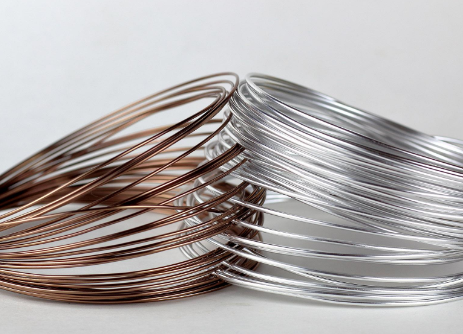Your location:Home >Automotive News >
Time:2022-07-04 13:26:00Source:
Currently, in the power industry, copper is king.According to foreign media reports, new research from the Pacific Northwest National Laboratory (PNNL) may change that.The lab offers a way to increase the conductivity of aluminum, making it more economically competitive than copper.The research opens the door to experiments that, if successful, could provide a superconducting aluminum replacement for copper.This aluminum can be used in markets other than power transmission lines, revolutionizing cars, electronics and power grids.

Replacing copper with lighter, cheaper and more abundant conductive aluminum would have a huge impact, the researchers said.
copper and aluminum
Currently, the growing demand for copper is rapidly outpacing its supply, leading to rising costs.As a good conductor, copper is used in a variety of applications, including handheld electronics that power the Internet and underwater transmission cables.However, copper is becoming scarcer and more expensive and cannot be ignored.This trend is expected to intensify as electric vehicles continue to develop, which use twice as much copper as conventional vehicles.In addition, copper is heavy and can also affect the efficiency of electric vehicles.
The price and weight of aluminium is two-thirds lower than that of copper.However, the conductivity of aluminum is relatively low, only about 60% of that of copper, which limits its practical application.
PNNLresearcher Keerti Kappagantula said: "Conductivity is critical because motors and other electronic components can be designed to be lighter by using lightweight wires with the same conductivity, which can extend a car's range. Anything that runs on electricity It can all be made more efficient so, for example, in car electronics, energy production, and charging car batteries at home through the grid.”
Improving aluminum's conductivity will be a game changer
Kappagantula explained: "For many years, researchers thought it would be impossible to increase the electrical conductivity of metals. But this is not the case. If you change the structure of a metal, and introduce suitable additives, it does affect its properties."
To understand how much the electrical conductivity of aluminum can be improved,PNNLpostdoctoral scholar Aditya Nittala, in collaboration with Ohio University Distinguished Professor David Drabold and graduate student Kashi Subedi, identified the effects of temperature and structural defects on the electrical conductivity of aluminum, and developed A formulations that can be controlled individually single atoms for improved conductivity.
Since such molecular simulations have never been performed on metals, the researchers hope to find inspiration in semiconductors.Because some previous studies have successfully simulated the conductivity of these silicon-based materials and some metal oxides.The team applied these concepts to the study of aluminum and simulated what would happen to the electrical conductivity of the metal if individual atoms in the aluminum structure were removed or rearranged.These small changes add up to a large increase in overall conductivity.
The model's ability to simulate real-world environments even surprised the team."We didn't expect these results to be so close to reality," Kappagantula said."This model simulation based on the atomic structure and its different states is able to achieve a high degree of precision."
Now, the researchers have identified a theoretical route to changing the conductivity of metals, and plan to learn about specific improvements in aluminum's conductivity in the lab, matching theoretical values with experimental results.In addition, the possibility of improving the conductivity of other metals was discussed through the same simulation process.
The team expects that the development of more conductive aluminum will have far-reaching implications.This superconducting aluminum is affordable and lightweight, and if successful, all applications that use electricity or copper will benefit.
Statement: the article only represents the views of the original author and does not represent the position of this website; If there is infringement or violation, you can directly feed back to this website, and we will modify or delete it.
Preferredproduct
Picture and textrecommendation

2022-08-04 12:57:12

2022-08-04 12:56:48

2022-08-04 12:56:28

2022-08-04 12:56:04

2022-08-04 12:55:36

2022-08-04 12:55:11
Hot spotsranking
Wonderfularticles

2022-08-04 12:54:48

2022-08-04 12:54:20

2022-08-04 12:53:54

2022-08-04 12:53:32

2022-08-04 12:53:03

2022-08-04 12:52:26
Popularrecommendations
